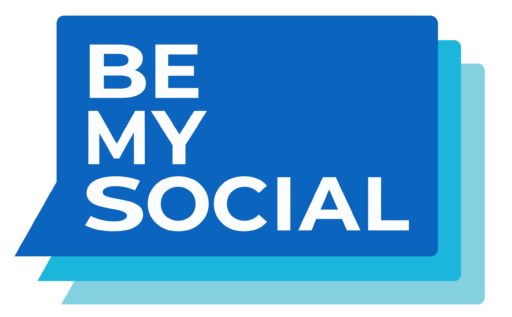The Evolution and Influence of Social Media
Social media has reshaped the way we communicate, interact, and share information across the globe. These platforms have evolved from simple networks for connecting friends to powerful tools for real-time news, entertainment, and cross-cultural communication. This article delves into the core aspects of social media, tracing its history, defining its various forms, and exploring its profound impacts on society.
Definition of Social Media
Social media encompasses a variety of online platforms that enable users to create content, share experiences, and interact with each other. While traditionally media provided only one-way communication, social media features interactive, user-generated content, blurring the lines between media producers and consumers. Platforms like Facebook, Twitter, and Instagram allow for not just sharing but also commenting, liking, and other forms of direct interaction, defining the new age of digital communication.
The Origins of Online Social Networks
The concept of social media can be traced back to early internet communication systems like email and bulletin board systems (BBS). These platforms laid the groundwork for the more interconnected systems that would follow. One of the earliest forms of social networking was USENET, created in 1979, which allowed users to post messages to different groups or categories, much like modern forum systems.
The Rise of Web-Based Social Networks
By the late 1990s and early 2000s, social networking had begun to take a more recognizable form with the launch of websites like Classmates.com and SixDegrees. These platforms introduced user profiles, the ability to connect with friends and acquaintances, and the beginnings of what we now recognize as a social network. SixDegrees, in particular, is noted for being one of the first to implement the features that would define future social networks, including profile creation and friend lists.
The Era of Major Platforms
The launch of Facebook in 2004 marked a significant evolution in social media. Originally a Harvard-only platform, it soon expanded and became available to the general public, quickly surpassing earlier sites like MySpace in popularity. Facebook’s growth was phenomenal, and it introduced many features that encouraged user interaction and content sharing, setting a standard for subsequent platforms.
Parallel to Facebook, other significant platforms launched and defined the social media landscape:
- Twitter, started in 2006, introduced microblogging with a character limit that encouraged concise, real-time updates and communication.
- YouTube, launched in 2005, revolutionised video sharing and became the primary platform for user-generated video content.
- Instagram, launched in 2010, focused on mobile photo and video sharing and quickly became known for its visual appeal and simplicity.
Expansion and Diversification
As these platforms grew, they began to influence various aspects of society, including business, politics, and personal communication. The integration of social media into everyday life became more pronounced, with platforms diversifying to include features like live streaming, ephemeral stories, and enhanced user interaction through likes, comments, and shares.
Social media’s rapid evolution reflects its ability to adapt to and drive changes in communication technology and social interaction. Its history is a testament to the human desire to connect and share, facilitated by advancements in digital technology

Examples of Major Social Media Platforms and Their Market Dynamics
Social media platforms vary greatly in their functions and audience, shaping how people connect, share, and consume information. Here’s an updated overview of some of the major platforms, including their user base as of early 2024:
- Function: Facebook remains a cornerstone of comprehensive social networking, with a range of features from news feeds and groups to marketplace sales and event planning.
- Users: 2.96 billion users worldwide, dominating the global market and maintaining a significant presence in the UK.
YouTube
- Function: As a major platform for video sharing, YouTube allows users to upload, view, and interact with videos, catering to a wide range of content creators and consumers.
- Users: 2.51 billion users, making it one of the largest platforms for video content globally.
- Function: WhatsApp provides messaging, voice calls, and video calls, and supports sharing of media and documents with end-to-end encryption.
- Users: 2 billion users, popular for its cross-platform messaging and calling services.
- Function: Instagram excels in visual content sharing, enabling users to post photos and videos. Features like Stories, Reels, and IGTV cater to both casual users and professional content creators.
- Users: 2 billion users, particularly popular among younger demographics globally and in the UK.
- Function: Primarily used in China, WeChat serves as a multi-purpose platform offering services from messaging and calls to social media and mobile payment.
- Users: 1.31 billion users, it’s a staple for communication and e-commerce in China, with growing international usage.
TikTok
- Function: Known for its short-form video content, TikTok “For You” page personalised content discovery, making it highly engaging for a young audience.
- Users: 1.05 billion users, rapidly expanding its presence and influence among Gen Z users worldwide.
Facebook Messenger
- Function: An instant messaging app that allows Facebook users to chat with friends both on mobile and the desktop.
- Users: 931 million users, facilitating communication directly linked to the Facebook platform.
Douyin
- Function: The Chinese counterpart to TikTok, Douyin offers similar short-video content but is tailored for the Chinese market.
- Users: 715 million users, dominating the short-form video space in China.
Telegram
- Function: Known for its emphasis on privacy and security, Telegram offers messaging services that are heavily encrypted and can include large group chats.
- Users: 700 million users, appreciated for its robust privacy features.
Snapchat
- Function: Snapchat is popular for its ephemeral content, including messages and media that disappear after being viewed.
- Users: 635 million users, favoured by younger audiences for its fun and interactive content formats.
- Function: LinkedIn serves as the primary platform for professional networking, job searching, and industry-related content sharing. It’s essential for professionals looking to expand their networks and career opportunities.
- Market Share: While LinkedIn has a smaller share in the general social media landscape, it is unrivalled in its niche of professional networking
X (formerly Twitter)
- Function: Known for microblogging, X allows users to post brief updates and engage in real-time discussions. It’s pivotal for news dissemination and live event commentary.
- Market Share: X maintains a steady presence in the UK, capturing a notable portion of social media interactions
These platforms illustrate the diverse ways in which social media impacts our communication, work, and personal lives, each serving specific needs and demographics and continually evolving to maintain and grow its user base.

Time Spent on Social Media: A Growing Trend
The Surge in Social Media Usage
The rise in time spent on social media platforms has been staggering over the past decade. Starting from an average of 90 minutes per day in 2012, users around the world have progressively dedicated more of their daily hours to social media. By 2024, the average had reached a peak of 151 minutes per day. This pattern underscores not just a shift in media consumption habits, but a broader transformation in global communication, entertainment, and information exchange behaviours.
Analysing the Trends
The bar chart reflects an upward trajectory in social media usage, with a slight dip to 143 minutes in 2024 from its peak of 151 minutes in 2023. This fluctuation could suggest a stabilisation after years of growth or the impact of emerging digital trends and platforms. However, the general trend remains clear: social media is a central component of daily life for billions globally.
Implications of Increased Social Media Time
With nearly two and a half hours per day being spent on social media, individuals are immersing themselves in a digital environment that impacts virtually every aspect of life. From news consumption and social networking to entertainment and shopping, social media’s imprint on daily activities is indelible. The engagement levels suggest that for many users, social media is not just a tool but a hub of daily activity—a virtual space where life unfolds in real-time.
The consistent increase in time spent on these platforms signals the need for individuals and organisations to consider the influence of social media carefully. It highlights the importance for businesses to leverage these platforms effectively and for users to be mindful of their digital consumption habits.
Social Media Marketing Explained
Social media marketing has become a critical tool in the promotional strategies of many businesses. It transcends traditional advertising by leveraging social networks to enhance brand presence and engage directly with customers. This approach not only helps in advertising products or services but also fosters a community around the brand, allowing for direct interaction and customer feedback. Social media marketing is characterised by its ability to target specific demographics, track engagement metrics, and adapt strategies in real-time, offering a dynamic way for companies to connect with their audiences and drive business objectives.
General Social Media Best Practices for Effective Engagement
To optimise your social media strategy and ensure effective engagement, here are some key best practices to consider:
1. Develop a Strategic Approach
Start by creating a comprehensive social media strategy. This involves setting clear, measurable, attainable, relevant, and timely (SMART) goals, understanding your audience deeply, and planning your content meticulously to cater to their preferences and behaviours. Use social media analytics to continuously refine your strategy based on real-time feedback and engagement metrics
2. Content Creation and Scheduling
Focus on generating engaging, relevant content that aligns with your brand’s voice and audience’s interests. Utilise a content calendar to plan and schedule your posts, ensuring consistency in your messaging and maximising your content’s reach and impact. Scheduling tools can also help manage this process more efficiently
3. Leverage Advanced Tools and Technologies
Embrace tools that streamline your social media operations, such as AI-driven analytics for better data-driven decisions and social media management platforms for scheduling and approval workflows. These tools can help you keep up with the rapid pace of trend cycles and optimise your social media presence
4. Prioritise Engagement
Interaction is key in social media. Make sure to actively engage with your audience by responding to comments, participating in conversations, and using social listening to understand and address the audience’s needs and perceptions. This builds trust and fosters a sense of community around your brand
5. Authenticity and Transparency
Maintain authenticity in your communications. Consumers value genuine interactions and can easily detect when brands are not being sincere. Feature real customers and include user-generated content to enhance credibility and authentic engagement. Be transparent, especially when addressing feedback or criticism, as this can significantly impact your brand’s perception
By integrating these best practices into your social media strategy, you can enhance your brand’s online presence, engage effectively with your audience, and achieve your communication goals more efficiently.
Conclusion
It’s clear that social media is more than a trend—it’s a pivotal part of our daily lives. The steady climb in screen time is a loud call to businesses: the digital stage awaits, and your audience is already there, ready to engage. In the vast sea of online content, your voice deserves to be heard, your brand seen, and your message shared.
Now, with the insights and trends we’ve laid out, imagine the possibilities for your brand. Think of the connections waiting to be made, the conversations ready to be sparked, and the relationships primed to grow. This isn’t just about keeping up—it’s about taking the lead in a world that’s constantly clicking, scrolling, and double-tapping its way to the next big thing.
Your Social Media Encore Awaits
Don’t let your brand’s potential just be part of the noise. It’s time for a standing ovation on social media, and BeMySocial is your backstage pass to the main event.
🚀 Embark on a Voyage with BeMySocial 🚀
Chart a course through the social media universe with BeMySocial at your helm. Let’s craft a presence that’s not just seen but felt, resonates not just heard, and connects not just observed. This is your curtain call to not just step into the spotlight, but to shine.
✨ Take Centre Stage with BeMySocial ✨
The audience is waiting, the stage is set, and your brand is the headliner. Contact BeMySocial now, and let’s create social media symphonies that capture hearts and minds, one post at a time.


































